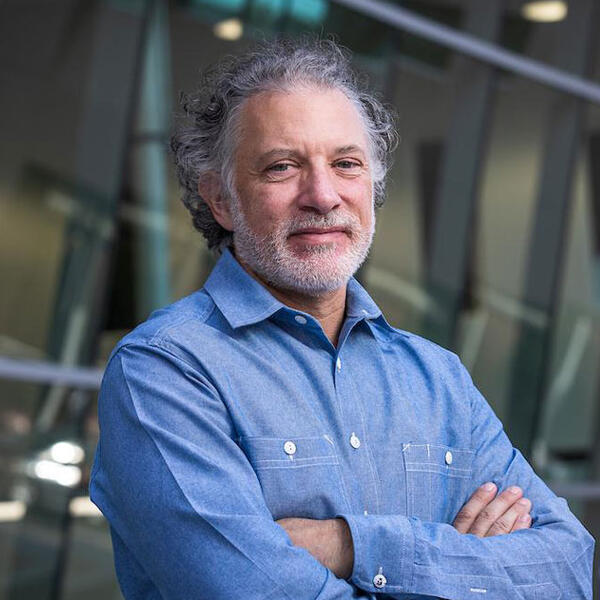
By
If you could create the Guide, what would be in it? What would be important elements to be included?
The future calls for rewilding. Not a Stewart Brand bring-back-the-mastodon rewilding but something more complex.
Let’s start with a simple observation. Antibacterial gels are bad for us. They kill most bacteria, but the ones that can survive these toxic conditions are bad – really bad and hard to kill. Our management of bacteria has been simplistic at best — annihilate all bacteria possible. This scorched earth policy leaves an open field for the most resistant microbes to populate without obstruction or crowding out competition. From hospitals to homes, hyperclean environments create dangerous conditions for us.
Ecologist Rob Dunn has a simple proposition: let’s garden our homes. In other words, lets grow good bacteria that compete against the one’s we don’t want. Imagine spraying and cultivating. Dunn uses the example of sour dough bread starter. The starter bacteria is good for us and yields some tasty bread. But it also wards off bad bacteria by its high acidity level. The same is true for other fermenting microbes – like that in kimchi or high-alkaline fermented foods such as Japanese natto.
But why stop at the homestead? We have trillions of microbes that live on and even in us. These microbial critters have their own genetics separate from ours. While microbes make up a trivial 2 percent of our body mass, the National Institutes of Health say microorganisms outnumber the human cells of our body by 10 to 1. So, some of you is you and the rest is microbial.
As a species we live in symbiosis with these microbial sidekicks that have evolved with humans over time. Moreover, each of us has a unique combination of them that makes up our microbiome. Understanding microbes can help us understand ourselves. Some aid our immune system to fend off foreign bacteria. Gut microbes affect development of our neural pathways, and there is early evidence that the wrong balance of gut bacteria can play a role in mood disorders. Conversely, a proper balance could help maintain mental health. Other early studies show that a change in gut bacteria can affect weight gain or loss with no other change in diet. Let’s garden our bodies through our microbial symbionts.
What about more rewilding beyond the microscopic scale. Think of the home as a zoo where good insects such as spiders kill off unwanted ones such as flies and mites. And here in the desert where I live, a pet cat kills off scorpions that make it past the bug spray and into the house; the cat also manages any rogue cockroaches in the home. Urban children who grow up around dogs have better immune systems and less likelihood of asthma than those that don’t. And pets are shown to calm anxiety and lessen cases of depression.
But let’s get bigger still. Living during the sixth extinction means whole swarms of animal and plant life are dying off. While dominant species often keep a foothold in a biome, the secondary species are disappearing at exponentially alarming rates. What if globally we strategically create massive additional parks on the scale of U.S. National Parks. Start with the succinct and poetic definition in the 1964 U.S. Wilderness Act. We’re talking about spaces that:
“… in contrast with those areas where man and his own works dominate the landscape, is hereby recognized as an area where the earth and its community of life are untrammeled by man, where man himself is a visitor who does not remain.”
Alongside and in cities we create green belts for animals to move through (and marginally for people to enjoy). All of this would increase the complexity of biosystems and prevent species loss. Some benefits to humans are obvious – like revival of topsoils, greening of the earth to help mitigate greenhouse gasses, and sources for extraction of new or as yet unknown medical compounds. The big takeaway in rewilding: complexity beyond what we can calculate.
Rewilding is a design that keeps the future open in complex ways – below and above and all together beyond the human scale of calculability and capitalization. Such openness keeps futures and possibilities alive.
About Ron Broglio
Ron Broglio's research focuses on how philosophy, art and literature can help us rethink our relationship to the environment. Ron is best known for nonhuman phenomenology and animal revolution. He is an associate professor at Arizona State University in the Department of English and senior sustainability scholar with the Julie Ann Wrigley Global Institute of Sustainability. In addition, he is an affiliate faculty member with the School of Arts, Media, and Engineering in the Herberger Institute for Design and the Arts. From 2017-2022, he is a visiting research professor with the University of Cumbria, U.K. His most recent book is "Beasts of Burden: Biopolitics, Labor, and Animal Life in British Romanticism" (State University of New York Press, 2017).